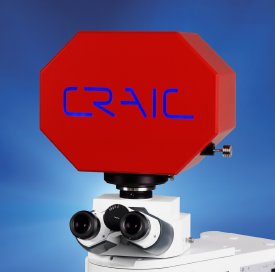May 18 2011
Organic Light Emitting Diodes (OLED) - the next generation of displays and light sources - have an emissive electroluminescent layer that consists of organic molecules in a supporting matrix. For full colour, high resolution displays, this layer is formed into millions of microscopic pixels in ordered rows and columns.
The biggest advantages of the OLED devices, unlike the traditional Liquid Crystal Displays (LCD), is that the pixels combine both the light source and the colour source making them lighter, thinner and more energy efficient. However, the consistency of the intensity and the colour of the optical emission across the device is critical, so this is where instruments such as the CRAIC Technologies 308 FPD(tm) are used.

The 308 FPD(tm) spectrophotometer is designed to measure and compare the spectral output, intensity and colour consistency of each microscopic pixel in milliseconds, thereby quickly creating spectral maps for a whole device and ensuring quality control is maintained.
CRAIC Technologies is a global technology leader focused on innovations for microscopy and microspectroscopy in the ultraviolet, visible and near-infrared regions. Their 308 FPD(tm) spectrophotometer is designed to be added to the open photoport of a microscope or probe station and is one of a number of their spectrophotometer instruments available through Elliot Scientific for customers in the UK and Ireland.